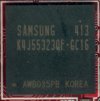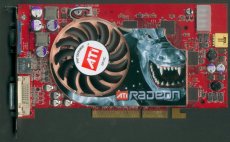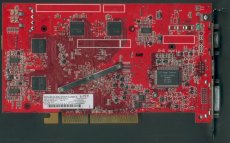The Board
Now that we’ve seen the R420 chip we'll take a look at the details of the two boards based on R420 that we're reviewing here.
You may have noticed above that the XT board that we are looking at here is not just an X800 XT, but the X800 XT "Platinum Edition". The Platinum Edition moniker makes it sound as though this will be a very limited board, however ATI assure us that it will be available to purchase in volume. With the chips coming in possibly 8, 12 and 16 pipe configurations there are likely to be lots of different versions, each with different speed steps. The Platinum Edition is ATI's highest reference specification, and as you may guess there is likely to be another XT configuration with 16 pipelines enabled but with slightly lower clock speeds, but as yet ATI haven't announced anything.
Although the Platinum Edition is ATI's highest reference specification, ATI's AIB's are free to take the high end models and tweak them to provide even higher performances. Indeed, we've already heard from Sapphire who are looking to provide an Overclocked X800 XT board under a slightly new Sapphire brand.
The board pictured above is that of the X800 XT Platinum Edition board that we received for review - the X800 PRO board came in exactly the same configuration, but obviously with lower speed RAM specifications. The boards here came from ATI's board manufacturing facility, right next to their headquarters, which no longer produce any retail boards but produce all of ATI's internal testing boards, any required for early OEM validation and evidently the review boards. So, some of the elements you see on these boards may not necessarily turn up in retail, certainly not for the PRO SKU. Although these boards here are essential reference boards, ATI's standard board manufacturing plants are currently in production of actual retail boards right now.
The reference board itself bears a large resemblance to the Radeon 9800 XT board in its configuration, layout and size, but there are obviously some changes. One thing that is evident is that the RAM chips are housed closer to the core than they have been on ATI's previous boards - presumably this is to reduce trace lengths for the high speed operation of the GDDR-3 modules. A point of curiosity has been the yellow connector at the the back of the board - this is in fact a VIVO connector as some European system manufacturers like to put video inputs on the front panel of their systems, and this connector easily facilitates that. The Rage Theater provides the VIVO functionality on these boards, however this may not be available with all configurations, nor the internal VIVO connector.

The reference board configuration features ATI's standard monitor output options with a single VGA and DVI connection. External TMDS transmitters can be added for a second DVI output, and board vendors will be free to make this configuration if they wish. There is also a video in/out port on the reference boards for the VIVO functionality.


